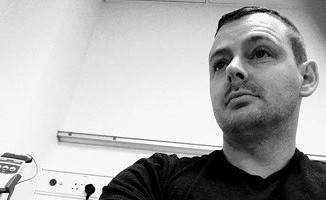Kevin Kane is raising awareness of the serious – yet surprisingly little known - genetic condition haemochromatosis, which causes the body to absorb too much iron from food, building up over the years to toxic and, if left untreated, often fatal levels. Haemochromatosis Week runs till 10 June.
Haemochromatosis is known as the “Celtic curse” because it is prevalent in those of Irish origins – meaning that due to the demographic of central Scotland, there will be a significant concentration of those with the disorder in the area, many of whom will remain undiagnosed.
The early symptoms include chronic fatigue, joint disease, liver disorders, heart problems, depression and diabetes.
When iron over load is undetected and left untreated, it can result in irreparable organ and tissue damage, such as liver failure, heart failure or cancer. However, if diagnosed before the damage occurs then it can be managed through regular venesections (blood letting) and patients can go on to lead a normal life with a typical life expectancy.
Although it is easy to diagnose – through a simple blood test – many sufferers are left undiagnosed, or are diagnosed after irreparable organ damage has occurred, because the symptoms of the disease can be mistaken for a number of other health conditions.
Haemochromatosis is known as the “Celtic curse” because it is prevalent in those of Irish origins
Kevin Kane
I was diagnosed with haemochromatosis in June 2017, after visiting my GP at Kilsyth Health Centre on and off for a year with a range of seemingly unconnected symptoms, including exhaustion, joint pain, malaise, chest and stomach pains and head pains.
My skin tone had developed a permanent tan – caused by iron deposits in my skin!
Fortunately, scans of my liver and heart showed I had been diagnosed – thanks to my diligent GP - before any significant organ damage had occurred. However, there was a long road ahead to recover properly. Since then and in order to release the iron from my body, I have attended Stobhill Hospital every 10-14 days where each time around a pint of blood has been withdrawn.
This process was difficult as the regular blood removals left me feeling unwell and exhausted, particularly as I was attending these appointments at 7.30am before going to work as usual.
I am grateful to the nursing staff at Stobhill for their considered treatment and support during this time. However I can count myself as one of the lucky ones as my iron levels have dropped significantly and without complications and after a year I’m now in maintenance – meaning I now only need to receive venesections once every three months in order to prevent the ferritin levels from rising again. I will need these venesections for the rest of my life.
I am now trying to raise awareness of the condition by fundraising for the Haemochromatosis Society – they do great work furthering knowledge and understanding of the condition amongst health professionals and individuals.
So far I have fourteen volunteers pledging to run for Team Iron Overload in the Great Scottish Run 10K this September and we have raised £450 to date.
We are looking for more runners to join our team (whether you dress up as iron man/woman for the occasion is up to you) and we are also seeking donations to help us reach our final target of £1000. If you would like to support #teamironoverload please visit here - all donations go direct to the society. More information about the disorder can befound here.







